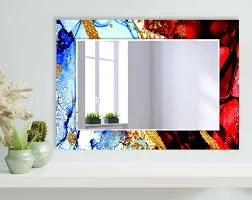

The Elegance of Acid Etched Glass
Acid etched glass is a remarkable material that has gained popularity in both architectural and interior design contexts. Its unique aesthetic appeal, coupled with its functional benefits, makes it a favored choice among designers and homeowners alike. This article explores the origins, processes, applications, and advantages of acid etched glass, illuminating why it has become a staple in modern design.
Understanding Acid Etching
Acid etching is a process that involves applying a mixture of hydrofluoric acid and other chemicals to the surface of glass. This technique creates a permanent frosted effect, resulting in a semi-transparent finish. Unlike sandblasting, which can create a rough texture, acid etching produces a smooth surface while still diffusing light. The design possibilities are virtually limitless; patterns can range from simple geometric shapes to intricate custom designs, making acid etched glass suitable for various applications.
The Process
The acid etching process begins with the careful cleaning of the glass surface to remove any contaminants. Once cleaned, a stencil or resist material is applied to conceal the areas that should remain clear. The acid solution is then applied, either by immersing the glass in the bath or using a brush or spray technique. The glass is etched for a specified time, after which it is thoroughly rinsed, neutralized, and dried. The result is a beautifully frosted glass panel that can be used in numerous applications.
Applications in Design

Acid etched glass finds its home in a multitude of settings. In architecture, it is commonly used for windows, partitions, and shower doors, providing a balance of privacy and light. In residential spaces, it can enhance the elegance of interior doors, cabinet fronts, and room dividers. Additionally, acid etched glass is frequently employed in commercial spaces, such as office buildings and retail environments, offering sophisticated branding opportunities through custom logos and designs.
Beyond its functional uses, acid etched glass can act as a canvas for artistic expression. Artists and designers often collaborate to create bespoke pieces that transform ordinary glass into extraordinary works of art. This versatility is one reason why acid etched glass is revered in both commercial and residential design.
Advantages of Acid Etched Glass
One of the primary advantages of acid etched glass is its ability to diffuse light while maintaining a level of privacy. This quality makes it especially desirable for spaces like bathrooms and offices, where natural light is essential but visibility needs to be minimized. Additionally, the smooth surface of acid etched glass is relatively easy to clean and maintain, making it a practical choice for high-traffic areas.
Another benefit of acid etched glass is its durability. The etching process alters the surface of the glass rather than compromising its structural integrity. This makes it resistant to scratching and wear, allowing it to maintain its elegant appearance for years to come. Furthermore, acid etched glass can be produced in various thicknesses, providing options for both aesthetic and functional requirements.
Conclusion
In conclusion, acid etched glass is a sophisticated and versatile material that has found its way into modern design. Its unique aesthetic qualities, combined with its practical advantages, make it an ideal choice for a wide range of applications. Whether used in homes or commercial spaces, acid etched glass offers an elegant solution that balances beauty and function. As design continues to evolve, it will be exciting to see how acid etched glass is employed in innovative ways, further solidifying its place in contemporary architecture and interior design.